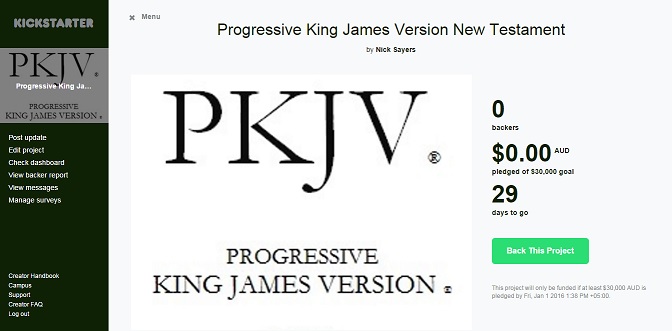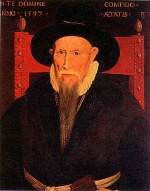Main Page
From Textus Receptus
| ` |
What is the Textus Receptus?
Textus Receptus (Latin: "received text") is the name retroactively given to the succession of printed Greek language texts of the New Testament which constituted the textual base for the original German Luther Bible, for the translation of the New Testament into English by William Tyndale (1526), Myles Coverdale's Bible (1535), Matthew's Bible (1537), The Great Bible (1539), The Geneva Bible (1557 - 60), The Bishops' Bible (1568), and the King James Version (1611), and for most other Reformation-era New Testament translations throughout Western and Central Europe. The Textus Receptus has been translated into hundreds of languages. (See Also The Word of God for All Nations) The origin of the term "Textus Receptus" comes from the publisher's preface to the 1633 edition produced by Abraham Elzevir and his nephew Bonaventure who were printers at Leiden:
- Textum ergo habes, nunc ab omnibus receptum: in quo nihil immutatum aut corruptum damus. Translated "so you hold the text, now received by all, in which nothing corrupt."
The two words, "textum" and "receptum", were modified from the accusative to the nominative case to render textus receptus. Over time, this term has been retroactively applied to Erasmus' editions, as his work served as the basis of others that followed. Many supporters of the Textus Receptus will name any manuscript which agrees with the Textus Receptus Greek as a "Textus Receptus" type manuscript. This type of association can also apply to early church quotations and language versions.
A Rich and Full History
Textus Receptus type manuscripts and versions have existed as the majority of texts for almost 2000 years.
- All of the Apostolic Churches used the Textus Receptus
- Peshitta (150 A.D.) was based on the Textus Receptus
- Papyrus 66 used the Textus Receptus
- The Italic Church in the Northern Italy (157 A.D.) used the Textus Receptus
- The Gallic Church of Southern France (177 A.D.) used the Textus Receptus
- The Celtic Church used the Textus Receptus
- The Waldensians used the Textus Receptus
- The Gothic Version of the 4th or 5th century used the Textus Receptus
- Curetonian Syriac is basically the Textus Receptus
- Vetus Itala is from Textus Receptus
- Codex Washingtonianus of Matthew used the Textus Receptus
- Codex Alexandrinus in the Gospels used the Textus Receptus
- The vast majority of extant New Testament manuscripts all used the Textus Receptus (99% of them)
- The Greek Orthodox Church used the Textus Receptus.
Greek manuscript evidences point to a Byzantine/Textus Receptus majority.
- 85% of papyri used Textus Receptus, only 13 represent text of Westcott-Hort
- 97% of uncial manuscripts used Textus Receptus, only 9 manuscripts used text of WH
- 99% of minuscule manuscripts used Textus Receptus, only 23 used text WH
- 100% of lectionaries used Textus Receptus.
The Age of Printing

Although six chapters of the Gospel of John were printed at Venice as early as 1504, by Aldus Manutius, and the whole of that gospel was printed at Tubingen in Suabia, in 1512, these editions are interesting only as literary curiosities, for though they constituted the first portion of the Greek Testament ever committed to the press, they exercised no influence whatever on succeeding editions.
The first printed Greek New Testament was the Complutensian Polyglot (1514) but was not published until eight years later. Erasmus' edition was the second Greek New Testament which he called the Novum Instrumentum omne, printed and published in (1516). As early as 1505, Erasmus wrote to a friend;
- “I shall sit down to Holy Scripture with my whole heart, and devote the rest of my life to it...[A]ll these three years I have been working entirely at Greek, and have not been playing with it” (Froude, The Life and Letters, p. 87).
Erasmus began working directly on the text much before 1507. Froude wrote that years before the text appeared, it was being prepared.
- “He had been at work over the Greek MSS. for many years. The work was approaching completion” (Froude, The Life and Letters, p. 93).
Frederick Nolan, writing in 1815, states, in addition to the manuscripts which Erasmus owned or had seen himself, he gathered readings from various European nations through his broad friendships in universities, libraries, and monasteries. He noted;
- “I have a room full of letters from men of learning...” “[W]e find by the dates of his letters that he was corresponding at length and elaborately with the learned men of his time on technical points of scholarship, Biblical criticism...” (Froude, The Life and Letters, pp. 377, 394).
In 1512 Erasmus had been in negotiation with Badius Ascensius of Paris to publish the Vulgate of Jerome and a new edition of Adagia. It did not happen, and Erasmus did not continue contacts with Badius. While many critics of Erasmus and the Textus Receptus claim that Erasmus used only a small handful of manuscripts, this is not a correct hypothesis, because the libraries and scriptoriums throughout Europe would not simply give away manuscripts, therefore Erasmus travelled vastly to examine many manuscripts and wrote down variants, and thus had no need to personally acquire the manuscripts or have them on hand when he penned the Novum Instrumentum omne. Erasmus updated his 1516 "Textus Receptus" in 1519, and again in 1522, 1527 and his final edition in 1535. Stephanus also edited the Textus Receptus in 1546, 1549, 1550 (Editio Regia), and 1551. Theodore Beza edited the Textus Receptus nine times between 1565 and 1604. The Authorized Version translators used the 1598 of Beza, a disciple of John Calvin, who both had access to Waldensian versions and manuscripts. This "family" of texts is also known as the Antiochian Text, Byzantine Text, Syrian Text, Greek Vulgate, and (until the 1980's) the Majority Text.
The Textus Receptus edited by Frederick Henry Ambrose Scrivener, and first published in 1881, was based upon the 1598 of Beza, but departs in 191 places (see 191 Variations in Scrivener’s 1881 Greek New Testament from Beza's 1598 Textus Receptus), following at times, earlier readings of Erasmus and Stephanus, and sometimes following the printing errors of the original 1611 Authorized Version. The title on the cover for the Textus Receptus printed by the Trinitarian Bible Society is Η ΚΑΙΝΗ ΔΙΑΘΗΚΗ which is Greek for The New Testament or The New Covenant. We uphold and support the 1598 Greek Textus Receptus of Beza and the 1525 Hebrew Masoretic Text of Jacob ben Hayyim ibn Adonijah, as being the correct Greek and Hebrew texts to translate from. Our belief is that the King James Version is a faithful translation of these texts and is without translational error. Any translation faithful to this text is THE word of God by default. We do not believe that the King James Version has any secondary inspiration. Our hope is to have the "TR" translated into every language, and to help revive a trust once again in the true words of God. This site also exposes corrupt Greek and Hebrew texts and versions based upon them.
The 1525 Hebrew Masoretic Text of Jacob ben Hayyim ibn Adonijah, published by Daniel Bomberg, is considered to be the Old Testament Textus Receptus but departs in a few places (see Variations in 1525 Hebrew Masoretic Text from the accepted modern Hebrew Masoretic Text). It is the text received by the Hebrews as the word of God. While most use the term Textus Receptus in a New Testament sense, this also applies to the text received by the traditionalists, the Masoretics, and their text handed down. The Masoretic Text is widely used as the basis for translations of the Old Testament in Protestant Bibles. Discoveries in modern times such as the Dead Sea Scrolls have revealed the MT to be nearly identical to some texts of the Tanakh dating from 200 BC.
Herman C. Hoskier said in the late 1800's:
- Three and a half years ago I was in Dean Burgon's study at Chichester. It was midnight, dark and cold without; he had just extinguished the lights, and it was dark, and getting cold within. We mounted the stairs to retire to rest, and his last words of that night have often rung in my ears since :
- "As surely as it is dark now, and as certainly as the sun will rise to-morrow morning, so surely will the traditional text be vindicated and the views I have striven to express be accepted. I may not live to see it. Most likely I shall not. But it will come."
See Also: Old Testament |
|---|
Languages Abenaki - Afrikaans - Akuapem Twi - Akei - Albanian - Aleut - Alutiiq - Amharic - Aniwa - Apache - Arabic - Aramaic - Armenian - Arapaho - Azeri - Basque - Bayak - Belorusian - Braille - Bulgarian - Burmese - Cakchiquel - Carrier - Catalan - Cebuano - Cherokee - Chinese - Chope - Cibemba - Coptic - Cornish - Cree - Croatian - Czech - Dakota - Danish - Dogrib - Dutch - English - Esperanto - Finnish - French - German - Gothic - Greek - Gullah - Gwich'in - Haida - Haitian - Hawaiian - Hawaiian Creole English - Hebrew - Hopi - Hungarian - Icelandic - Ilocano - Indonesian - Inupiaq - Irish - Italian - Japanese - Jèrriais - Kazakh - Keres - Khmer - Konkani - Korean - Koryak - Koyukon - Latin - Lisu - Lithuanian - Macedonian - Malayalam - Manx - Maori - Micmac - Mohawk - Navajo - Norwegian - O'odham - Ojibwa - Oromo - Pashto - Inupiaq - Persian - Pidgin - Pipil - Polish - Portuguese - Romani - Romanian - Russian - Seneca - Serbian - Shor - Slavonic - Slovene - Spanish - Swahili - Swedish - Tagalog - Upper Tanana - Tatar - Tamil - Tewa - Thai - Tibetan - Tlingit - Tongan - Tsimshian - Turkish - Urdu - Ukrainian - Uyghur - Uzbek - Vietnamese - Wakhi - Welsh - Wampanoag - Waray - Xhosa - Yiddish - Yoruba - Yupik - Zulu - Zuñi




